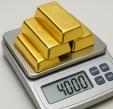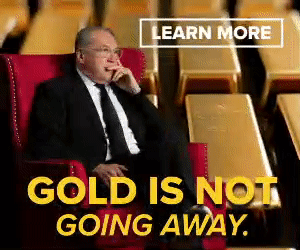STAGFLATION: Federal Reserve Unsure What to Do Next
In a rare moment of honesty, Federal Reserve Chairman Jerome Powell admitted he and his fellow central bankers don’t know what they’re doing as they wrapped up the May Federal Open Market Committee (FOMC) meeting this week.
As was expected, the Fed held interest rates steady at the meeting, taking a “wait and see” attitude.
“There’s just so much that we don’t know,” Powell conceded. “I think, and we’re in a good position to wait and see, is the thing. We don’t have to be in a hurry.”
Uncertainty was the theme of Powell’s post-meeting press conference, as he focused on the unknown impact of tariffs on the economy.
During a speech at the Economic Club of Chicago last month, Powell set up tariffs as a scapegoat as the inevitable effects of the Fed’s reckless monetary malfeasance during the pandemic and as the Great Recession played out. He doubled down on the theme during the post-meeting press conference.
The official FOMC statement also expressed worry about the impact of tariffs, saying, “Uncertainty about the economic outlook has increased further.”
Specifically, the committee said it “is attentive to the risks to both sides of its dual mandate and judges that the risks of higher unemployment and higher inflation have risen.”
If only there were a word for an economic slowdown with high unemployment coupled with rising prices.
Oh, wait, there is... Stagflation.
Powell said it was “too early” to know whether inflation or economic weakness would be the biggest problem. And how long will it take before there is more clarity? Powell said he doesn’t know.
Powell & Company also failed to provide any hints on the future direction of monetary policy because – they don’t know. Powell did rule out the possibility of a preemptive rate cut to offset the impact of tariffs.
When asked about the national debt and ever-growing deficit spending, Powell stated the obvious – it is “on an unsustainable path.” However, the Fed chair refused to offer any solutions.
Powell’s admission that the central bank doesn’t know what to do next or how things are going to play out is a rare moment of honesty from a central banker. Fed people like to maintain the illusion that they are in control. They want you to believe they're wise and knowledgeable, equipped with the tools and brainpower necessary to guide the economy through thick and thin with calm hands firmly on the tiller.
The fact that the people who set interest rate policy only forecast the correct trajectory of future interest rates about a third of the time is telling. The fact of the matter is, Fed members aren’t scientists with crystal balls. They are politicians with strong academic backgrounds.
Fed officials rarely admit they are improvising. Apparently, Powell decided it was politically expedient to do so in the current situation with the president breathing down his neck, demanding rate cuts.
The fact is this debt-riddled bubble economy can’t function in a high-interest rate environment. It needs its easy money drug. In other words, the Fed needs to simultaneously raise rates to battle price inflation and cut rates to prop up the weakening economy.
It can’t do both.
No wonder Powell has taken the “we don’t know, wait and see” position. What else can he do? But it’s important to remember that the Fed is always in this position. Monetary policy isn't a science. It's more akin to throwing darts at a dartboard.
Turning to lighter topics, a group of scientists just announced they have turned lead into gold!
Since ancient times, people have been trying to figure out how to transform common metals such as lead or iron into gold.
Well, it may have finally happened in Geneva, Switzerland, where an experiment detected the transmutation of lead into gold.
The experiment's central mission is to study the quark–gluon plasma (QGP)—a state of matter believed to have existed microseconds after the Big Bang, where quarks and gluons were not confined within protons and neutrons.
We don't know what any of that means, but that's how it's been described, and we thought it was important to include for any sciency folks who might be listening.
Anyway, alchemists back in the day primarily focused their efforts on turning common substances into gold using chemistry. Needless to say, they never figured it out. However, with the advancement of physics, scientists discovered that heavy elements do transform into other elements naturally or through radioactive decay – or in a lab under a bombardment of neutrons or protons.
So now we can literally make gold! We're all going to be rich! Well, not so fast. It will apparently take about 33.9 billion years to create just one ounce of gold at the rate these scientists are doing it. In other words, don't hold your breath.
Here's the thing: even if we could produce large amounts of gold in a lab, what would be the point? If gold suddenly became commonplace, it wouldn't be worth as much. Gold's rarity is one of the features that makes it so valuable.
So, if you do figure out how to turn lead (or something else) into gold on a large scale, you might want to keep it to yourself!
Lastly, and before we get to this week’s interview, let’s take a look at the weekly market action.
Gold is seeing a nice bump in prices here this week and has recovered all of the losses from the last two weeks and a little bit more. The yellow metal currently checks in at $3,358 an ounce, up just over $100 or 3.2% for the week.
Turning to silver, it too has had a good couple of days here to end the week and currently trades at an even $33.00 an ounce, up 2.3% since last Friday’s close.
As for the PGMs, both are over $1,000 now and both have gained exactly $34 an ounce or 3.5% for the week. Platinum comes in at $1,018, while palladium is just a tick below at $1,016 as of this Friday morning recording.
********






 Mike Gleason is a Director with
Mike Gleason is a Director with 









